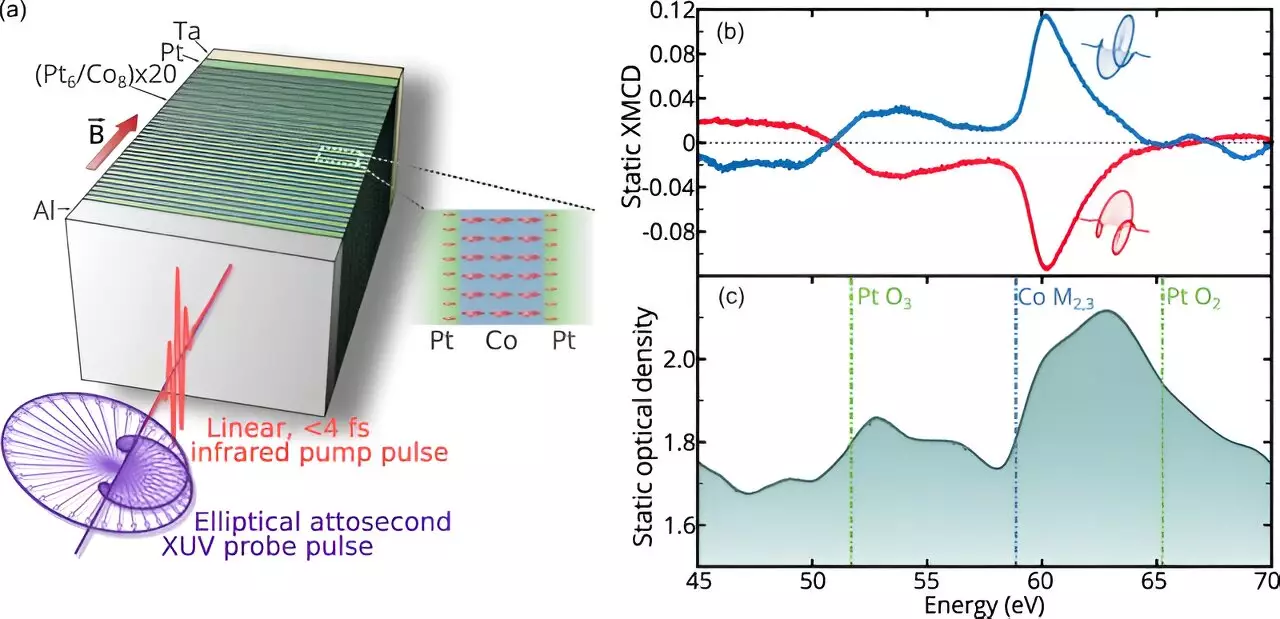Spin currents represent an exciting frontier in the field of electronic and spintronic devices. Unlike traditional electrical current, which is driven by the flow of charge carriers, spin currents leverage the intrinsic angular momentum—or “spin”—of electrons to transmit information. This innovative approach has the potential to enhance the speed and energy efficiency of electronic devices, leading to faster computing and reduced energy costs. Recent developments in the generation of these spin currents using ultrashort laser pulses may soon pave the way for practical applications in next-generation electronics.
A groundbreaking study published in the journal *Physical Review Letters* details how an international team of physicists achieved direct generation of spin currents using specific ultrafast lasers. Unlike previous methodologies that depended on indirect methods—which often resulted in mixed electron orientations and inefficient yield—this new technique allows for greater control and directionality. The researchers focused on a layered structure composed of 20 alternating nanometer-thick layers of platinum and cobalt, which provided an optimal environment for the generation of uniformly aligned spins.
The experimental setup involved subjecting this layered structure to a strong magnetic field oriented perpendicular to the layers. This magnetic alignment ensured that the spins of the electrons were harmonized, setting the stage for subsequent laser-induced manipulation. The initial linearly polarized laser pulse excited the electrons, and when complemented by a circularly polarized probe laser, the team was able to achieve a rapid transfer of spin states between the layers. Distinctly, this process transpired over a mere few femtoseconds, showcasing efficiency that was previously unattainable.
The implications of this study for the field of spintronics are vast. The ability to directly generate spin currents enhances the feasibility of developing devices that utilize electron spins for data transfer rather than relying solely on charge flows. This could lead to the design of ultra-fast memory and processing units that not only outperform conventional technologies but do so with significantly lower power consumption.
Moreover, the research team’s theoretical calculations validated their experimental observations, suggesting a robust framework for future investigations—highlighting a harmonious relationship between theory and practice. This harmony could foster further innovations in the design and optimization of spintronic devices. As the world increasingly shifts toward efficient energy solutions, the findings from this research could not only influence electronics but also have profound environmental implications.
Looking ahead, the ability to manipulate spin currents with pinpoint precision invites a realm of future studies that could explore not only further refinements of this technique but also its integration into larger systems. Researchers may soon investigate how these methods could be employed in conjunction with other emerging technologies like quantum computing, paving the way toward unprecedented computational power. The marriage of ultrafast laser techniques with spintronic applications could mark a significant turning point in how we design electronic systems moving forward.
The direct generation of spin currents via ultrafast laser pulses represents a significant leap in our capabilities within the field of spintronics. With ongoing research, we are likely approaching a new era where energy-efficient, high-speed electronic devices could become reality, fundamentally changing the landscape of technology as we know it.


Leave a Reply
You must be logged in to post a comment.